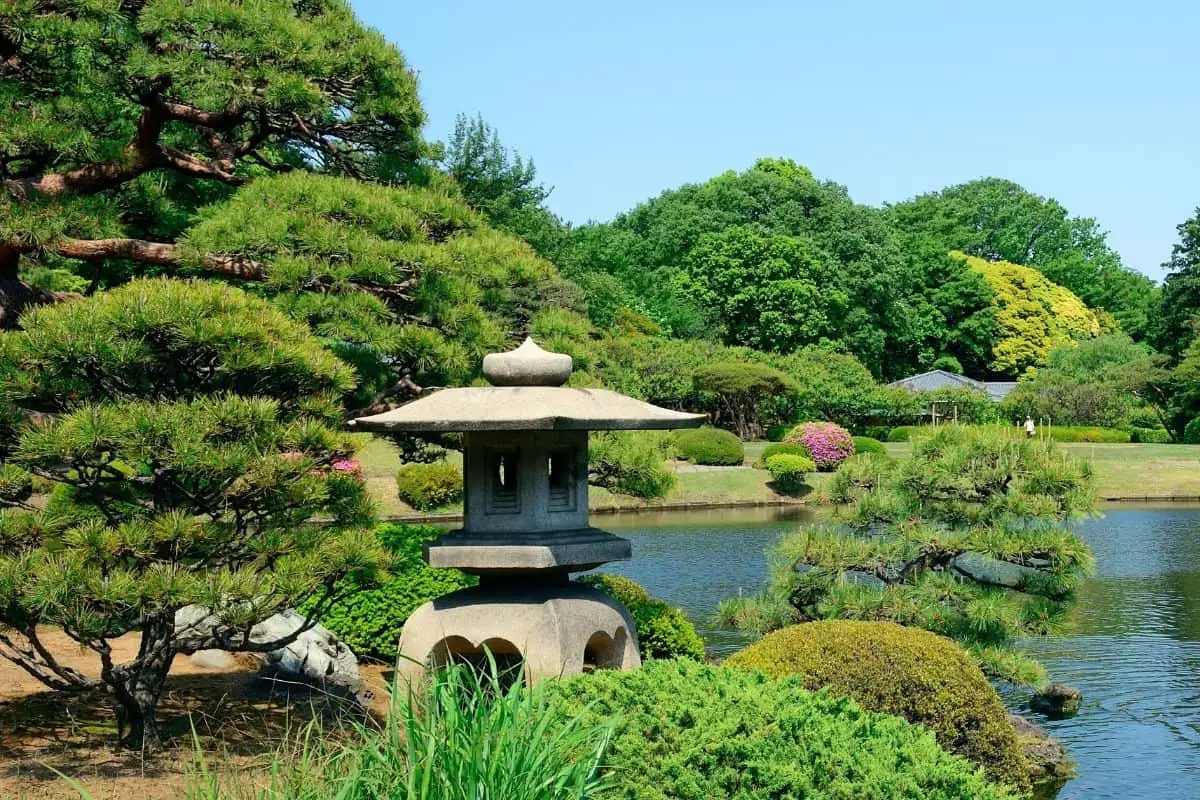Japan has the world’s most manicured and beautiful gardens imaginable. There are stunning gardens throughout the world and I’ve seen many of them in my travels.
My goal is not to take away from any one of those gardens but to rather point out how incredible these 10 have been designed and taken care of. I am a gardener at heart and have spent countless hours in my own planting, pruning, and getting lost in time.
In a city, the size of Tokyo and its 30 million residents in the Tokyo metropolitan area that contains multiple cities, towns, and villages combined into one incredible region, gardens for the citizen’s relaxation is an absolute must.
On average Tokyo has some of the best gardens in Japan. Each one having been carefully designed and manicured over many decades. The gardens themselves have a wide variety of interests from water features with large Koi to others filled with cherry trees that attract thousands of visitors each spring.
How could such a crowded city boast such beautiful and spacious gardens where a 300 square foot apartment could be called normal?
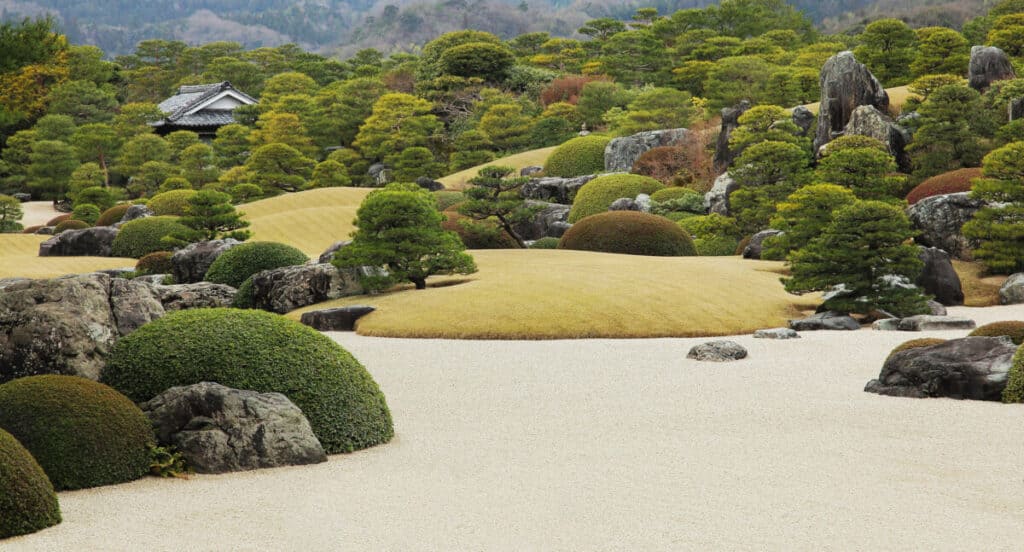
In total Tokyo has an incredible number of parks within the metropolitan area. Some areas are small as an average American home’s backyard while others cover dozens of acres. The metro area has a total of over 6,000 separate parks and has a total acreage of almost 2,500.
For me personally, the Japanese garden holds a special magic that I rarely see outside of Japan. I think the word that might best describe the essence of these gardens is dedication. The hard work and care to sculpt such beauty is nothing less than many lifetimes of care. Why then is the Japanese garden so special?
As a whole, the Japanese garden is admired for its manicured perfection. Each garden takes hundreds of hours of work to maintain and keep each tree, shrub, and plant healthy and pruned to a sculpture-like art piece. Many gardens replicate nature but on a smaller contained scale.
The zen-inspired rock garden is perhaps my favorite. I have spent many hours and lots of work to make one on a small scale in my own garden.
Experience the beauties of nature, and in doing so learn about yourself
japanese proverb
There are many elements in the zen rock garden. From massive boulders that represent islands, surrounded by raked gravel representing the sea and its waves. Most rocks in the Zen garden will be gray and have a weathered look about them. Sometimes covered in moss to represent a forest in miniature.
My favorite garden in Tokyo is perhaps not the biggest or most popular, but for me, it epitomizes what a Japanese garden is.
KIYOSUMI GARDEN
Kiyosumi garden is an oasis in an ocean of concrete and steel. The centerpiece of the garden is its pond. The pond is surrounded by trees, shrubs, and bushes. Each contributing to the garden in a particular season.
Three small islands are in the pond. Two are not accessible to visitors, but one is connected to the small footpath by a small wooden bridge.
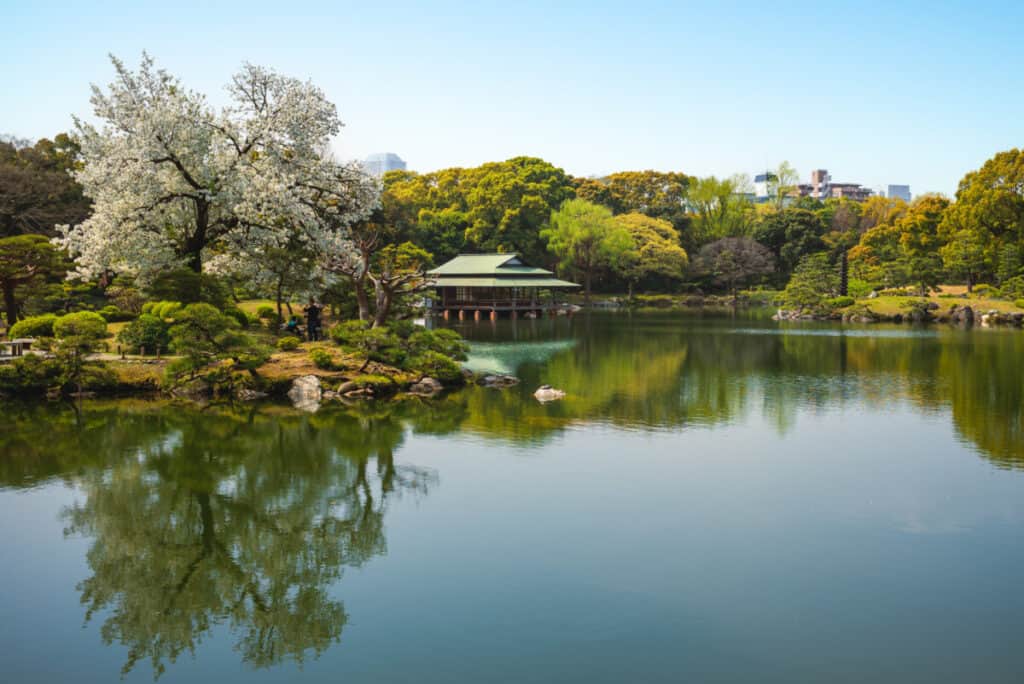
Around the pond is a gravel path with many wooden benches to relax and take it all in. The pond itself has koi, turtles, and birds that fly in from the nearby river to feed. The shore of the pond has beautifully manicured small pines.
There is a tea house built on piers over the pond and to me looks much like traditional Japanese homes of bygone eras.
KIYOSUMI GARDENS Tokyo metro park association official website
To reach the garden by train take the Toei O-Edo Line and Tokyo Metro Hanzomon Line, Kiyosumi-Shirakawa Sta. (3 minutes walk) Toei Bus Line: JR Kameido Sta., North Exit, #7 Bus Stop (Line #33) Take the Toyoumi-suisan-futo bus; get off at “Kiyosumiteien-mae” (3 minute walk) .
Admission fee: ¥150 (Persons 65 and over: ¥70)
Shinjuku Gyoen National Garden
Less than a mile from the Olympic Stadium the garden itself combines a few types of gardens into one. The southern area of the garden is a traditional Japanese garden.
In the northern area are two other types of gardens, one a French formal garden and also an English Landscape garden.
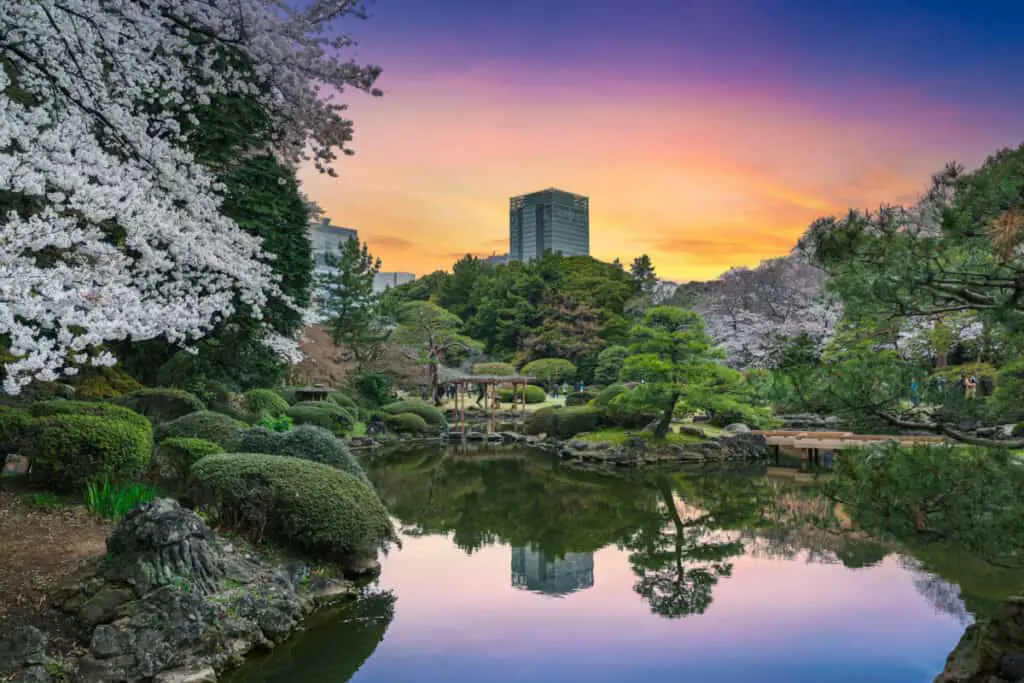
The garden’s total size is very large at 114 acres. There are roughly 20,000 trees in the garden and in the spring cherry blossom viewing tradition (hanami) visitors are graced with 1,500 cherry trees that bloom incredibly.
Greenhouse work in the garden dates back to 1892. The current existing greenhouse was built in the ’50s and has an extensive collection of tropical and subtropical plants.
To reach the park: There are three separate entrances to the Shinjuku Gyoen National Garden. To reach the main entrance, go to the southeast exit of Shinjuku Station. Walking time from the station is approximately 10 minutes to the park entrance.
Admission fee: ¥500 Children under 15 free
Hama Rikyu Gardens
The park is an island surrounded by a moat with waters from where the Sumida river empties into Tokyo bay. Protected by a river lock system to protect the park from possible flooding.
The park has a large pond that empties into the lock area. In the center of the pond is a small island with a traditional Japanese tea house. Bridges from three separate directions converge on the small island containing the tea house.
Almost every vantage point has high-rise buildings in the distance. The parks walking paths are quite extensive and an entire day can be spent exploring them.
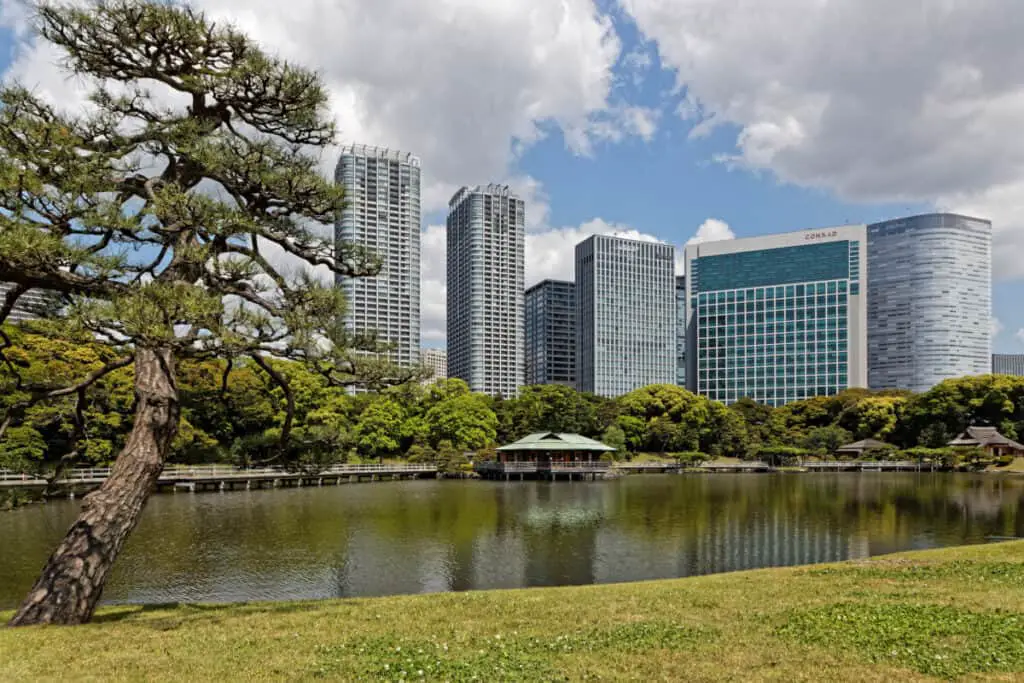
A truly perfect location for a spring picnic or an afternoon winding down from a hard day of exploring the area. This garden won’t disappoint with the thousands of trees, shrubs, and flowers.
To reach the park: Hama Rikyu Gardens is near Shimbashi Station about 15 minutes walk. If you are at Shiodome Station the distance is about a 5-minute walk. Shiodome Station is on the Yurikamome line. Alternately the island is visited by the Sumida river tour boats as well.
Admission fee: ¥300 (65+¥150)
Rikugien Garden
The central part of the garden like many found in the metro area is a large pond. Paths surround the pond and make for a relaxing stroll around the garden.
There is a tea house on the shore of the pond, although I thought the island in the center of the pond would have made for a better location. A couple of other tea houses are on site as well.
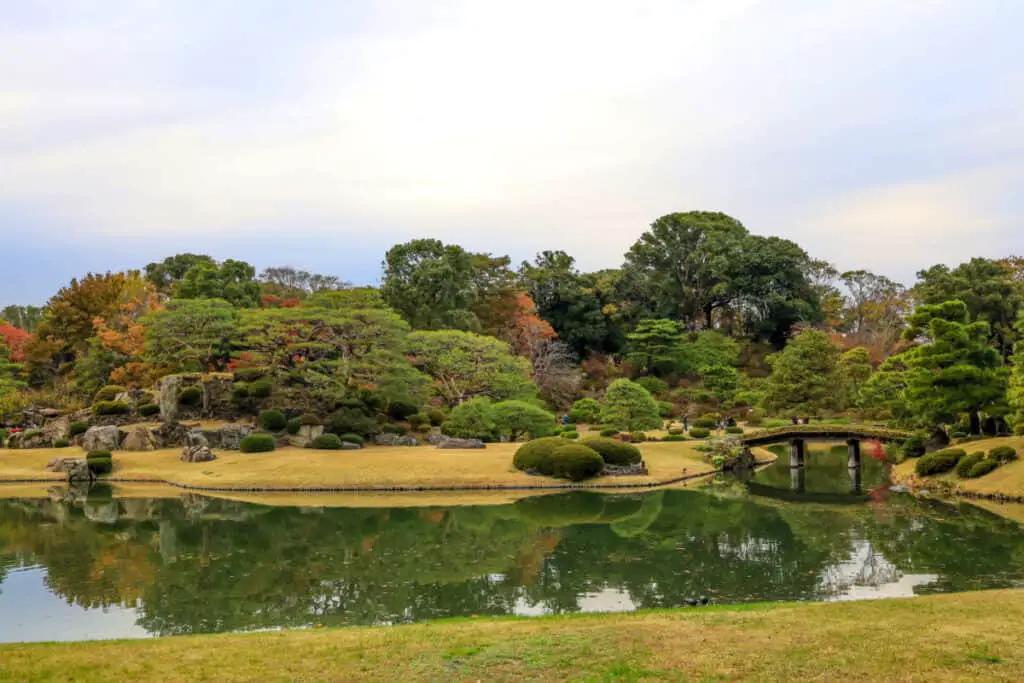
There is a small bridge that goes out to the island and makes for great photo opportunities. The large weeping cherry stands out in the garden. Lots of colorful azaleas in spring and at certain times of the year are lighted displays on the trees.
To reach the gardens: Rikugien Garden is near the south exit of Komangome Station. Additionally, you can also get to the garden directly by taking exit 2 from Komagome Station.
Admission fee: ¥300 (65+¥150)
The East Gardens of the Imperial Palace
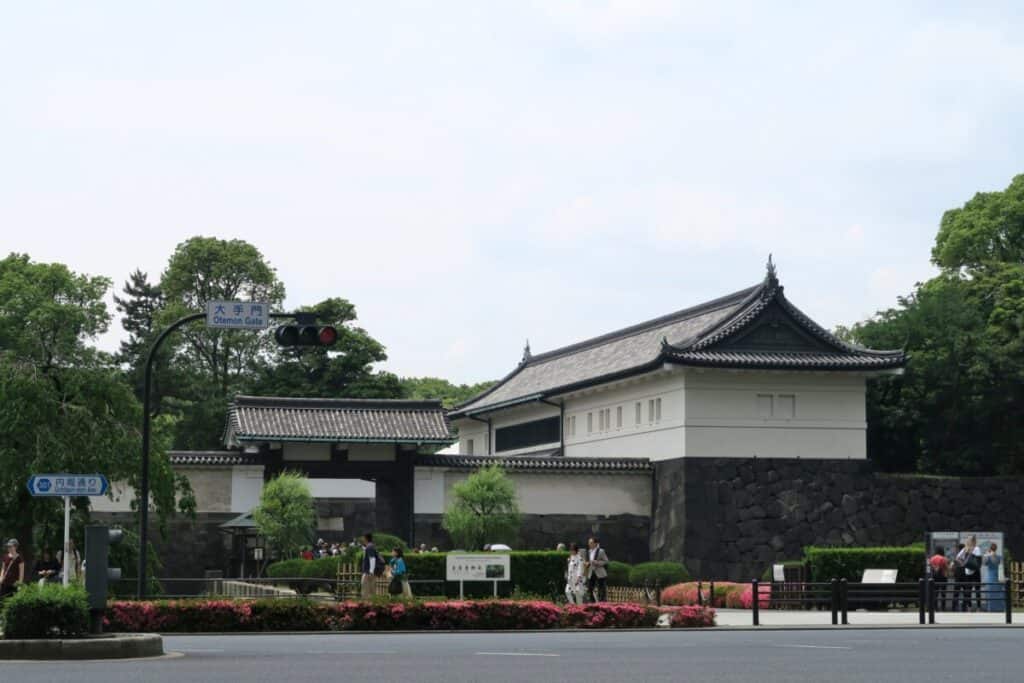
The gardens themselves are quite beautiful but the Imperial Palace is not open to the public.
The East Gardens are built on the ruins of the Edo Castle. It’s possible to climb to the top of the former castle’s tower and get a great view of the surrounding area.
You can also see the Suwano teahouse, the Gakubu music and concert hall, museum of the imperial collections. The East Imperial Gardens cover 53 acres and have numerous sculpted pines and a variety of deciduous trees.
To reach the gardens: The Imperial East Gardens are a 5-minute walk from Otemachi Station and a 15-minute walk from Tokyo Station.
Admission fee: Free of charge.
Koishikawa Korakuen Garden
Located next to the Tokyo Dome Koishikawa Korakuen Garden has a small pond and an island with a Shinto shrine brightly colored red and can be seen from the shore of the pond.
The pond is surrounded by a gravel walking path and the park itself is filled with a variety of trees including Japanese maple, plum, and a variety of evergreens mixed with deciduous trees.
Tokyo Dome can be spotted while strolling thru the park. High-rise buildings can be seen jutting over the trees in the distance.
The Kantokutei Pavillion can be entered to grab a quick snack or take a rest from a long park stroll.
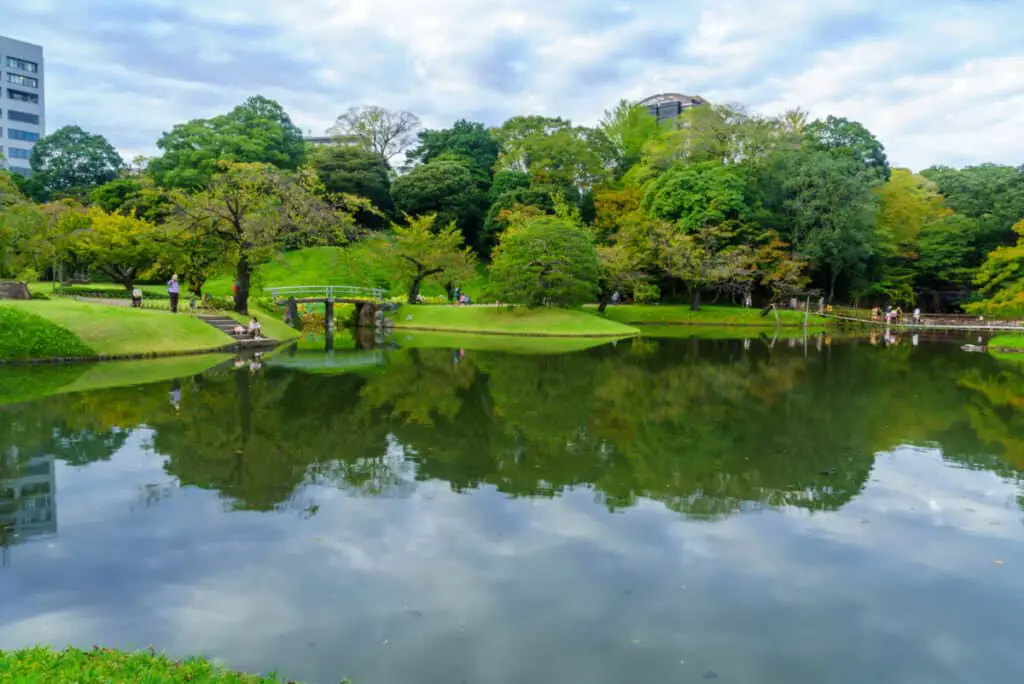
To reach the gardens: From Iidabashi station it’s a 10-minute walk or from Korakuen Station 10 minute walk as well.
Admission fee: ¥300 (65+¥150)
Happo-en Garden
A perfect example of a traditional Japanese Garden. A small pond filled with colorful koi and a small open-air tea house on the shoreline. Filled with trees and deep shade along its paths, a great way to get out of the summer heat.
It’s estimated that there are over 2000 marriages in and around the park annually, so there’s a good chance to see one in progress while you are there.
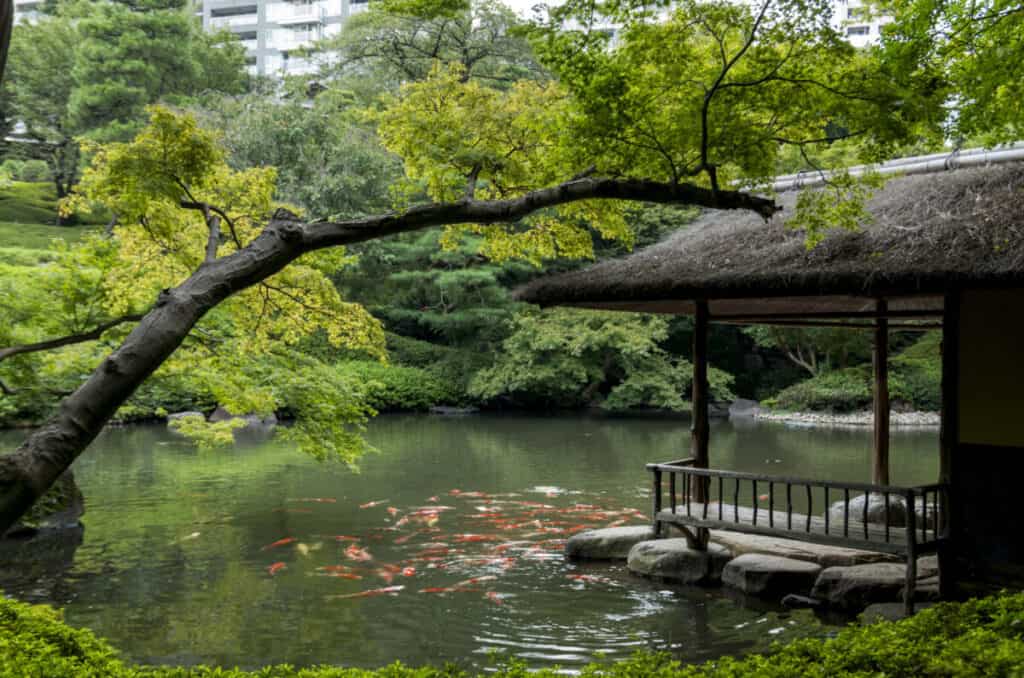
One major caveat is that this park is not open to the public but rather guest at the Happo-en
To reach the garden: From Shirokanedai station is about a 3 minute walk.
Admission fee: Not open to the public (private tours may be available)
Hotel New Otani Japanese Garden
An amazing garden that’s part of a Hotels grounds makes this most likely the best place in Tokyo to stay for the garden lover. The garden size is quite large for hotel property at 10 acres. It features a large waterfall and pond. The garden itself is over 400 years old and once belonged to a samurai.
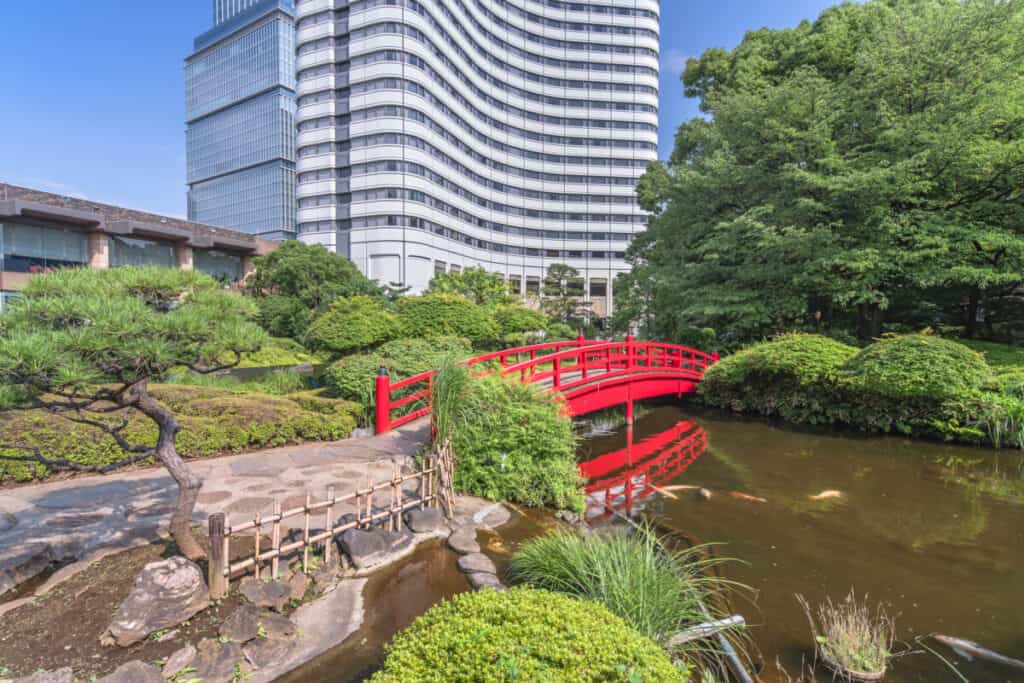
The garden has narrow walking paths and ancient lanterns and a small red bridge that crosses the stream. The garden is open to the public from 6 am to 10 pm daily.
To reach the garden: The nearest Japan Metro Station is Hanzomon
Admission fee: Free of charge
Shiba Rikyu Gardens
Located very close to the Hamarikyu Gardens the now Kyu-Shiba-Rikyu Gardens is a more open area garden with a small pond and walking paths.
In the summer months, this garden is quite a bit warmer than others due to the lack of large shade trees. It’s definitely worth seeing but an umbrella might be warranted in the hot humid days of summer.
Beautifully landscaped with a myriad of blooming flowers, small bridges, and a traditional tea house. A smaller park but makes a great diversion for an hour or two.
To reach the garden: Using the Yamanote Line. The garden is next to the Hamamatsucho Station.
Admission fee: ¥300 (65+¥150)
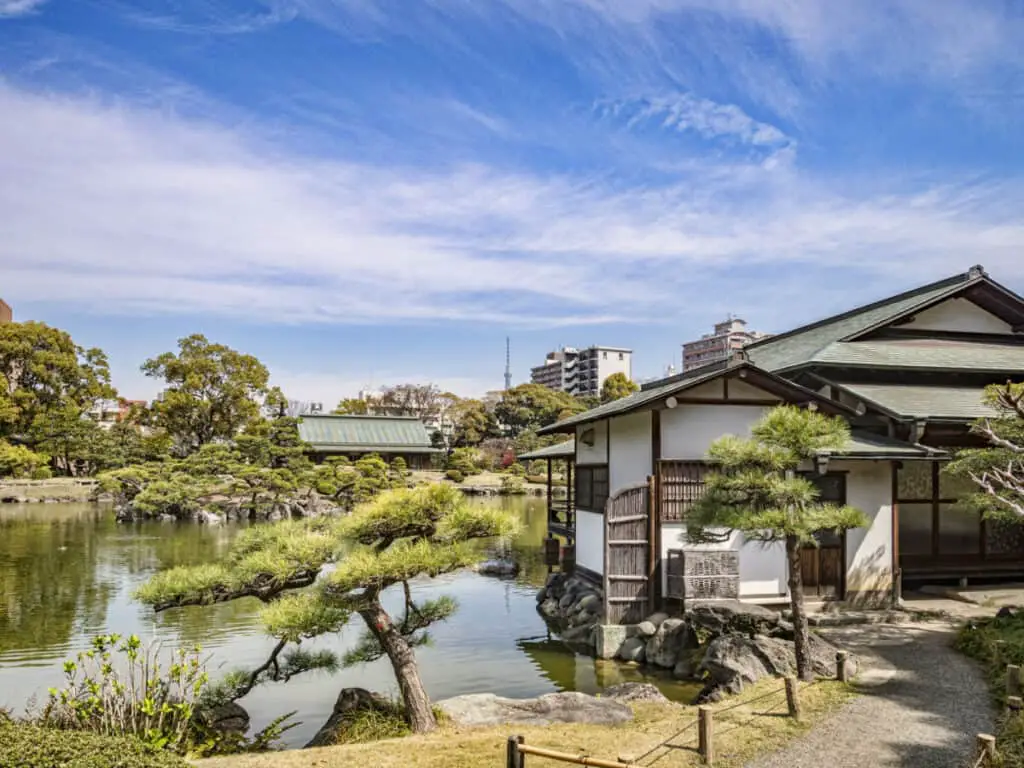
Meiji Shrine Imperial Garden
A smaller garden by Tokyo garden standards but it is as many gardens in Tokyo filled with flora and fauna to stimulate the senses.
There is an azalea garden with a variety of colors in spring and also filled with Japanese maples that add interest in the fall months with the changing color of their leaves.
The total park size is about 20 acres and has a beautiful iris garden which is in full bloom from late spring to early summer.
The garden also contains a beautiful tea house that overlooks a sloping lawn.
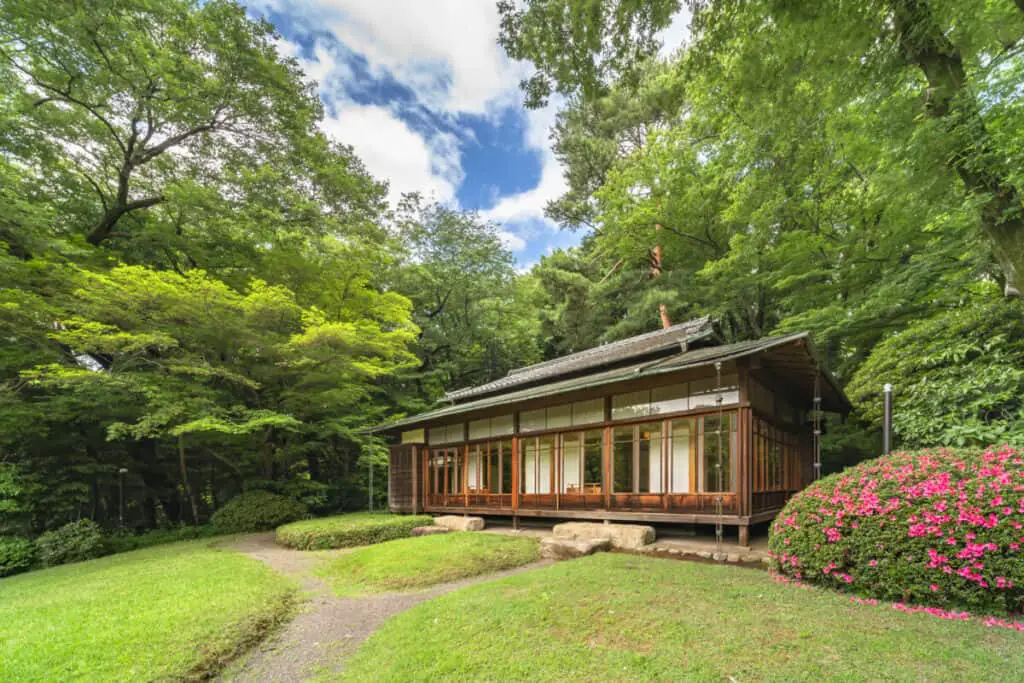
To reach the garden: 10-minute walk from the Omotesando Exit of Harajuku Station.
Admission fee: ¥1000
With the thousands of gardens to see in Tokyo these are 10 spectacular examples of Traditional Japanese gardens, teahouses, ponds, and all of the things you would associate with them.
If time permitted only one garden for me to visit in Tokyo then Kiyosumi would be my choice without a doubt. I think that exemplifies the perfect Japanese garden in my mind. The next time in Tokyo I am sure it will be on my list of to-dos.

